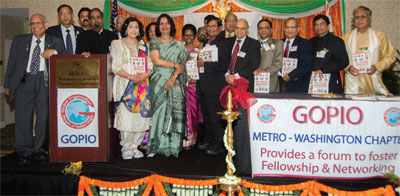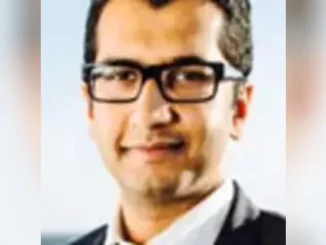
WASHINGTON (TIP): “The Ghadar Movement was like a spark of fire, which lit up the whole forest,” said Ambassador of India Nirupama Rao addressing the audience of over 200 at the centennial celebration of Ghadar Party Movement for India’s independence. “It is the spirit of sacrifice, the spirit of courage that was exemplified by ghadarites who were inspired by the call of freedom,” Rao added.
She said that this ghadarites movement was similar to the Irish independence movement, who also gained their freedom from the British after a long and turbulent struggle and many sacrifices. She enumerated the steps being taken by the Indian government, including release of a postage stamp by the Prime Minister early this year, to recognize the significant contribution of the movement in India’s freedom struggle.
She mentioned that the Indian government has taken upon the project to convert the Ghadar Memorial Hall in San Francisco into a museum and a functional library. The ambassador said that the Indian Diaspora, who lit the torch for the freedom movement hundred years ago, are now making significant contributions in many fields in USA. The ambassador also recognized services of octogenarian Ghulam Yazdani Siddiqui, who was imprisoned in India by the British government, for his participation in freedom movement during his student days.
The day-long program was arranged by the Metropolitan Washington Global Organization of People of Indian Origin (GOPIO) in cooperation with national GOPIO and Indian community organizations of Metro Washington on Sunday, 28th July at Rockville Hilton in Maryland.
It consisted of seminars, banquet and entertainment. Seminar speakers talked about the formation of Ghadar Party and its initial members that included Lala Hardayal, Maulvi Barkatullah, Kartar Singh Bhakna, Sohan Singh Bhakna, and others. Inder Singh, chairman of the international GOPIO said that the current generation of Indian-Americans knows very little about the history of Indians in US. “To pass on to the next generation the legacy of the pioneers rests solely on us and particularly on our community leaders,” he said.
Surender Pal Singh, 76, grandson of Bhagwan Singh-one of the eminent Ghadarites-said there is a need to recognize the contributions of the Ghadar Movement and its leaders in the freedom struggle. Singh, who had come from Atlanta for the occasion added that time has come to make Ghadar Party Movement a part of history text books.
Professor Harbans Lal who came from Dallas, Texas said that the movement, which started in the West Coast of northern America with a small group of people from diverse religious groups, impacted India thousands of miles away with full force. Dr. Joy Cherian and Dr. Sambhu Banik talked about life and contribution of heroes of Ghadarite Movement. Sandip Mallick of South-Asian American Digital Archive (SAADA) gave a power point presentation of archival material.
SAADA is helping preserve Ghadarite movement history. Ambassador Subhas Mungra of Republic of Surinam, Ambassador Islam Siddiqui, Chief Agricultural Negotiator US, Deputy Secretary of Maryland State Dr. Rajan Natarajan, Maryland State Attorney- General Mr. Douglas Gansler, Montgomery County Executive Ike Leggett, and Maryland State Delegate Aruna Miller also expressed their appreciation for the event celebrating 100 years of the Ghadarite independence movement.
Welcoming the guests and audience, Washington GOPIO president Dr. Zafar Iqbal mentioned that the program for the year-long celebration of the centennial was launched at the Embassy of India on 3rd November 2012 by Ambassador Rao. He elaborated that tonight’s event was organized to honor the ultimate sacrifices of Ghadar Party Movement heroes, who preached and practiced the motto, Sar Kata Sakte Hain; Sar Juka Sakte Nahin (We can have our heads cut off, we cannot bow our heads to anyone).
Event chairperson Dr. Renuka Misra highlighted the significance of the movement that had cooperation of major communities that included Sikhs, Muslims, and Hindus. She elaborated that tonight’s function also had participation of diverse ethnic and cultural organizations. Misra also performed the task of master of ceremony. Sumptuous dinner was followed by a variety of entertainment program that included lively Bhangra dance. Dr. Satish Misra and Nitin Gupta thanked the guests, supporters, and participants in making the event a success.





Be the first to comment